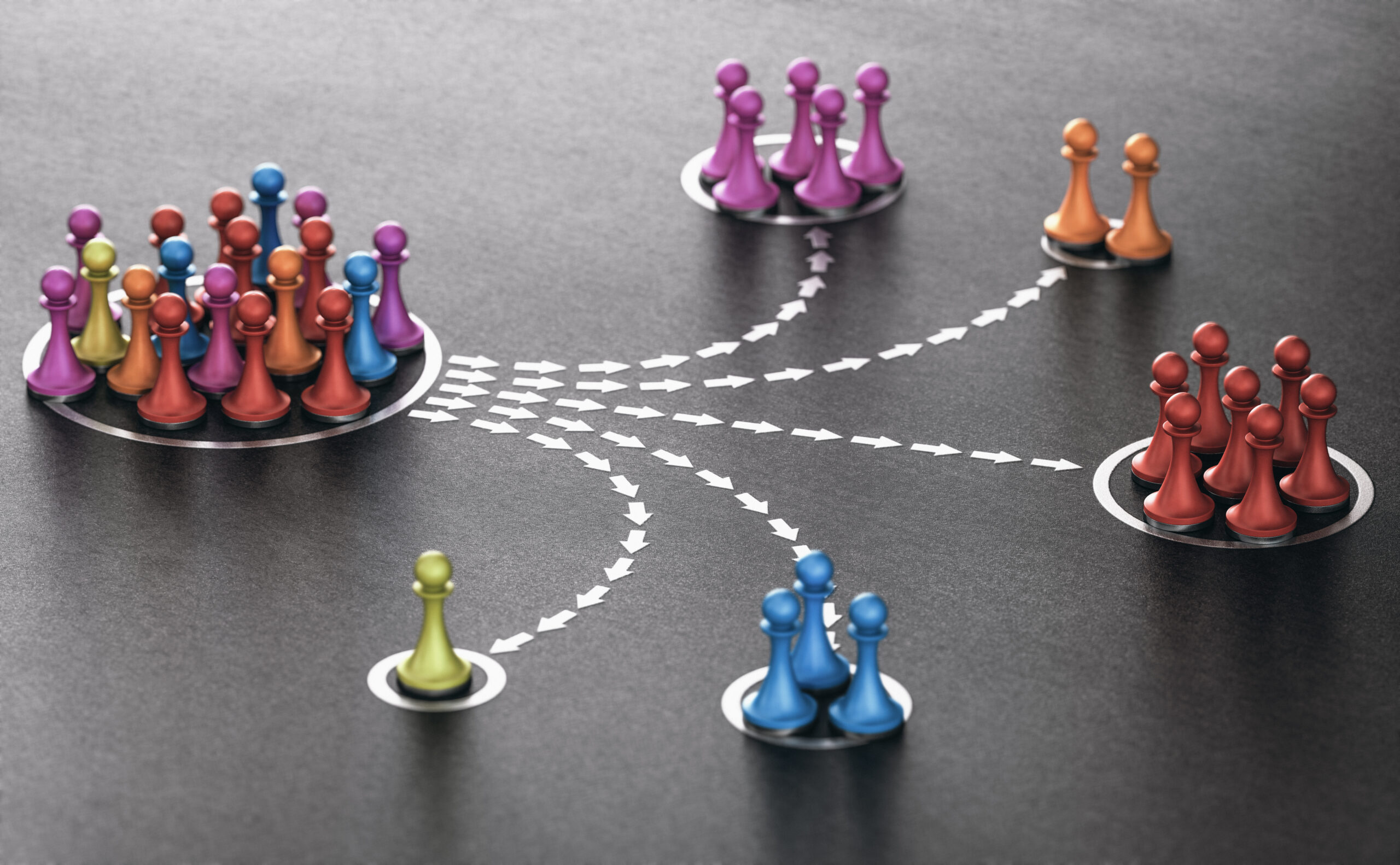Understanding your customers is key to business success. Through customer segmentation, we can group customers by certain behaviors and traits, making marketing efforts more personal and effective. This blog will explore this process, discussing different ways to group customers—from purchasing behavior to loyalty and beyond—to enhance business performance.
Customer Segmentation by Behavior
Behavioral segmentation provides different means to classify customers. Purchasing history, usage patterns, and location are key indicators to consider for personalized outreach.
For instance, segmentation by purchase frequency assists in recognizing and prioritizing high versus low frequency shoppers. Product segmentation helps in marketing and sales focus on significant product lines. Geographic segmentation is ideal for region-specific product or service promotions.
Refining Strategies with Purchase Amount Segmentation
Segmenting customers based on their purchase amount helps zero in on high-value customers, facilitating specific targeting. It starts by determining the average purchase amount. Once you’ve accounted for this, you categorize customers into groups of higher, lower, or average spenders.
Not only does this enable the delivery of consistent and personalized messages to each group, but it also drives a surge in sales. High spenders could be targeted with exclusive offers or premium products, whilst lower spenders could be incentivized to increase their spending through value deals or bundles. This segmentation can also reveal underlying buying patterns or product preferences, ultimately assisting in refining future product development or marketing campaigns.
Thus, purchase amount segmentation is an invaluable strategy to tailor offers, maximize customer lifetime value, and foster strengthened customer relationships.

Optimizing Marketing with Purchase Amount Segmentation
Using the purchase amount as a parameter for customer segmentation is an efficient strategy for isolating the highest value customers within your business. Guided by the calculation of average purchase amounts, customers can be divided into groups that correspond to high, average, or low spending.
This segmentation aids in delivering tailored and consistent messaging that speaks directly to the behavior of each group. It’s an opportunity to develop focused promotional strategies – premium services or loyalty programs for high spenders, targeted discounts or bundled deals for average to low spenders.
Moreover, it provides insights about buying behavior, informing product or service development aimed at increasing the spending of lower-value groups and maintaining the interest and loyalty of high spenders.
Thus, purchase amount segmentation is an indispensable tactic. It not only customizes marketing communications but also amplifies sales and boosts the potential of your customer base.
Deep-Dive into Loyalty, Product Interest, and Time-Based Segmentation
Customer loyalty segmentation is a vital tool in maintaining a strong customer base. By grouping customers based on their loyalty, businesses can strengthen the connection with regular, satisfied clients, re-engage semi-loyal customers with targeted promotions, and use retention strategies for those at risk of leaving the brand.
Product category based segmentation dives into engaging customers by analyzing their previous purchases or expressed interests. This tactic shines in cross-selling or upselling opportunities – by understanding the product preferences of groups, businesses can spotlight new product updates or related products that are likely to interest the group.
Time interval-based segmentation breaks the customer base down by the time they’ve spent interacting with the brand. For new customers, the business could spotlight ‘getting started’ content or introductory promotions. For longstanding customers, the focus could shift to loyalty rewards or exclusive sales. This strategy ensures that every communication is timely and relevant, fostering deeper connections between customers and the brand.
In essence, not only will segmentation on loyalty, product interest, and time intervals provide businesses with an in-depth understanding of different customer groups, but it will also empower businesses to create customized, effective strategies for customer engagement, retention, and growth.

Boosting Business with Engagement, Location, and Sentiment Segmentations
Understanding customer engagement levels helps businesses encourage loyalty and predict future interactions, enabling them to plan their strategies better.
Location-based segmentation allows for targeted marketing campaigns and improved customer service, taking into account local market preferences and needs.
Sentiment-based segmentation uses feedback from surveys or customer interactions to understand customer feelings towards your brand. This information is crucial to refine products, services, and marketing messages for better customer satisfaction.
In summary, these segmentation methods help businesses personalize their approach, improving their marketing and sales efforts and leading to overall business growth.
“Unleash the power of customer insights. Tailor, engage, and boost your sales. Schedule a call today!”
Schedule a Call
I’m Julio Lopez, a dedicated digital marketing specialist. My passion is helping businesses grow by making meaningful connections through marketing. I’ve learned a lot on my journey in this field, focusing on both creative thinking and smart planning to achieve success.


Leave a Reply